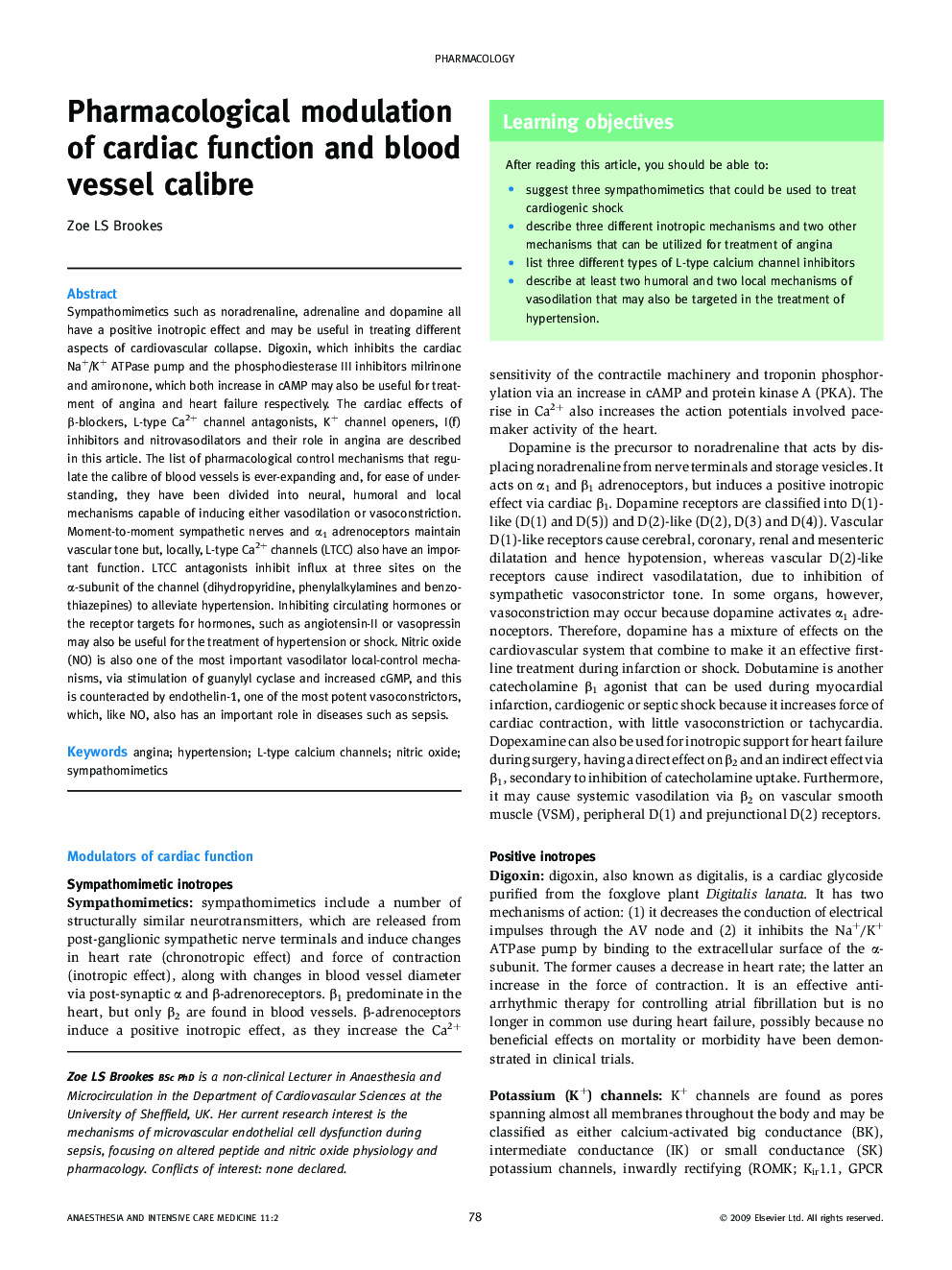| Article ID | Journal | Published Year | Pages | File Type |
|---|---|---|---|---|
| 2743189 | Anaesthesia & Intensive Care Medicine | 2010 | 5 Pages |
Sympathomimetics such as noradrenaline, adrenaline and dopamine all have a positive inotropic effect and may be useful in treating different aspects of cardiovascular collapse. Digoxin, which inhibits the cardiac Na+/K+ ATPase pump and the phosphodiesterase III inhibitors milrinone and amironone, which both increase in cAMP may also be useful for treatment of angina and heart failure respectively. The cardiac effects of β-blockers, L-type Ca2+ channel antagonists, K+ channel openers, I(f) inhibitors and nitrovasodilators and their role in angina are described in this article. The list of pharmacological control mechanisms that regulate the calibre of blood vessels is ever-expanding and, for ease of understanding, they have been divided into neural, humoral and local mechanisms capable of inducing either vasodilation or vasoconstriction. Moment-to-moment sympathetic nerves and α1 adrenoceptors maintain vascular tone but, locally, L-type Ca2+ channels (LTCC) also have an important function. LTCC antagonists inhibit influx at three sites on the α-subunit of the channel (dihydropyridine, phenylalkylamines and benzothiazepines) to alleviate hypertension. Inhibiting circulating hormones or the receptor targets for hormones, such as angiotensin-II or vasopressin may also be useful for the treatment of hypertension or shock. Nitric oxide (NO) is also one of the most important vasodilator local-control mechanisms, via stimulation of guanylyl cyclase and increased cGMP, and this is counteracted by endothelin-1, one of the most potent vasoconstrictors, which, like NO, also has an important role in diseases such as sepsis.
